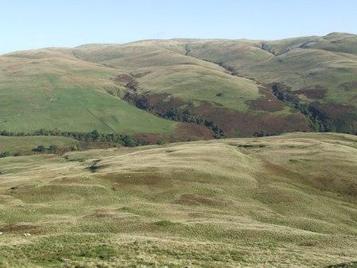So yesterday afternoon I attended her seminar at Edinburgh Uni on Africans in Scotland in the 16th century and much enjoyed it. She now has a total of at least 13 different people of African origin in Scotland across the century, mainly in the households of monarchs and a few other, high-status individuals, including the two 'morys' in 1549, of course.
This morning, I think we can increase that to at least 17 - with some more context!
In 1562 a distribution list for bread, wine, candles etc in the household of Mary Queen of Scots was compiled. The manuscript is in NAS at E33/5 and it was published as Menu dela Maison dela Royne Faict Par Mons. de Pinguillon. M.D.LXII. and published by Thomas Thomson in about 1819.
Like the de Guise bread distribution, it is arranged hierarchically. In the 'bread' section, after the queen's table, the master household's table and the ladies' table etc comes the 'table des filles desmoiselles'. The 'fillles desmoiselles' were young girls but, usually 'of good family'; indeed, letters survive from noble parents asking Marie de Guise to take their daughters as 'filles desmoiselles'.
Eight people ate at this table. It was overseen by the 'gouvernante' (sometimes known as the Mistress of the Maidens) and the names include la Jeune Leuiston (the young Livingstone, a Scots nobleman's daughter), another is La Jeune Bethon, and then comes La sauvaige. The last name is 'rallay', evidently one of the nicknames so widely used in these lists. Rallay had her own servant and there is another servant allocated to the 'filles' as a group.
The list then moves on to the gentlemen's servants table, the chamber women's table, the valet de chamber's table, two tables for household officers and then the table for officers of the kitchens where 17 people ate. These include 'villemonson et gregoire, sauuaige galloppins' and also 'adrian sauuaige gardeuaisselle'. Gallopin is, literally, a rascal but was commonly used to describe menial kitchen servants and the gardevaisselles again did what it says, took care of the kitchen utensils and so on.
In March of 1563 a payment is recorded for a horse hire for Adrian Sauvage, 'sommelier de la vessels de cuisine' [waiter on the kitchen utensils] (NAS E33/7/3 f. 31v-33v for month-end summary for March).
The 'filles desmoiselles' were given a modest allowance of wine, the 'sauvaige' again specified and, whilst those in the kitchen are not specified by name in the wine list, they totals of people are the same, so they got some wine as part of the group they belonged to.
'La Sauvaige' is clearly, literally, 'The Savage' but, for example, when Mary went hunting in the southern Highlands, supplies were sent to here 'au sauvage' (in the wilds) so it is not perhaps as derogatory as it seems. In any case, the girl is well placed and well fed; the servants ate the group's left-overs The two gallopins are further down the pecking order, but still are parts of the household, regularly fed - and they even have names! Adrian Sauvage, too, is a servant but is trusted with a horse and his job was not menial. The girl and the kichen servants ate with their peers. It would be intriguing if, as was often the case, the kitchen servants were also children, raising the question of how they came to be there, a question addressed at last night's seminar, though with only the most general conclusions.
There must remain a question of whether 'sauvage' necessessarily means, not just 'savage' but 'African'? There must also be a possibility that Adrian Sauvage was simply his name, though that seems unlikely in the circumstances. It is just possible that these people were from some other background but North Africa must, surely, be the most likely. Whilst the little girl might have been treated as something of an 'exotic pet', tolerated as a curiousity, that cannot apply to the kitchen servants who would seldom, if ever, have been seen by the sort of high-status visitors whose views of the court mattered! They are servants amongst servants, doing prosaic tasks.
I will post more on this story over the next few days, including images of the 'morys' entry in the Bread Book.

 RSS Feed
RSS Feed